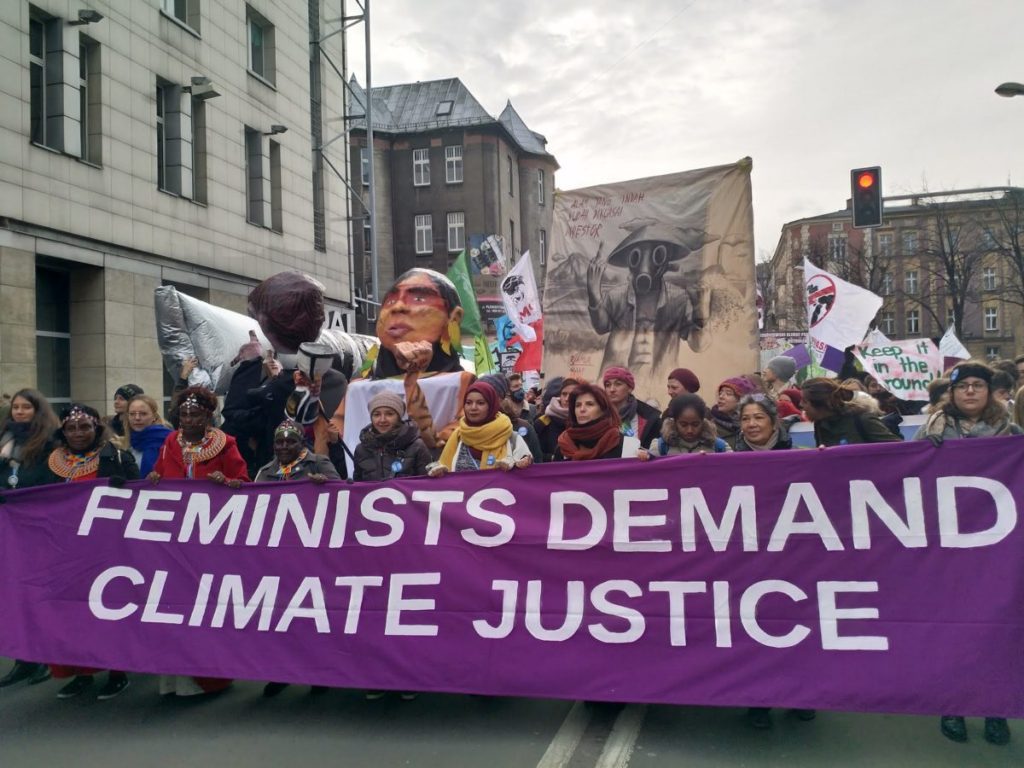
Editors Note: This article is part of our Women’s Movement Series that curates articles written and supported by activists and advocates working to create a more inclusive, global women’s movement. It will run from October 2018 to January 2019. It seeks to amplify and highlight issues that need to be heard in our feminist movement.
By Morgan Moone, Associate Editor

“[dropcap]M[/dropcap]ost people do not understand the critical times in which we are living,” says Pennie Opal Plant, a climate activist and co-founder of Idle No More SF Bay. The risk that climate change poses, both presently and in the future, is only exacerbated in female and gender non-conforming populations. There is science-backed evidence of increased health problems in women and girls, such as lung cancer, heart disease and dementia. The results are intergenerational, with climate change causing premature births, low birth weights and other fetal abnormalities that often carry life-long consequences. Despite this, “[climate policy and regulatory] spaces are historically spaces for men,” says Laura Cooper Hall , a former gender and finance Fellow at Women’s Environment & Development Organization (WEDO), in an interview for Medium. Women must be included in delegations, negotiating tables and policy discussions in order for climate justice efforts to be fully realized. Displacement and climate-based migration and relocation plans must be viewed from a gendered lens, taking particular account of indigenous and LGBT+ communities.
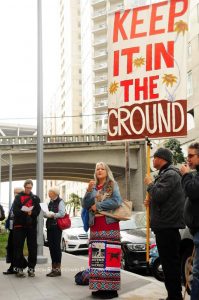
In many developing countries, women and girls carry the burden of water and food collection, directly linking women’s rights and climate change with food security, hygiene and health. Maggie Ellinger-Locke, a staff attorney at Greenpeace states: ““Women make up the majority of the world’s poorest people, and provide the majority of the world’s food—including small-scale farming and cooking and providing meals.” Climate change, drought in particular, disproportionately impacts women and girls as it increases the chance of infection, hunger, illegal land grabbing and lowered school attendance as women and girls are forced to trek farther distances to collect supplies critical for daily life.
The aspirations of climate justice will not be achieved unless we realize that climate justice must include a gendered lens.
Women experience climate change more dramatically because of the systemic deprivation of their rights on a domestic and global level. Women, as a result of social policies that cause them to experience poverty at a greater rate and hold lower socioeconomic status than men, are less able to recover from “natural” disasters such as hurricanes, earthquakes and typhoons. In the wake of the 2004 tsunami, an Oxfam report found that surviving men outnumbered women by almost 3:1 in Sri Lanka, Indonesia and India. Men were more likely to be able to swim and women lost precious evacuation time trying to look after children and other relatives. In the aftermath of Hurricane Maria, rates of Puerto Rican women living in poverty increased more so than men, and women suffered from increased violence and lack of access to health and hygiene care.
Gender non-conforming individuals are even more likely to suffer from lack of proper healthcare, as their needs are largely overlooked in disaster relief efforts. Human Rights Watch highlighted: Following the Indian Ocean tsunami in 2004, transgender women were denied access to temporary shelters because their appearance didn’t match the gender listed on their ID documents. An OutRight report on the 2010 Haiti earthquake recovery effort showed that even well-intentioned, gender-specific food distribution queues excluded some LGBT people from accessing aid.
Viewing Climate Justice through a Gendered Lens
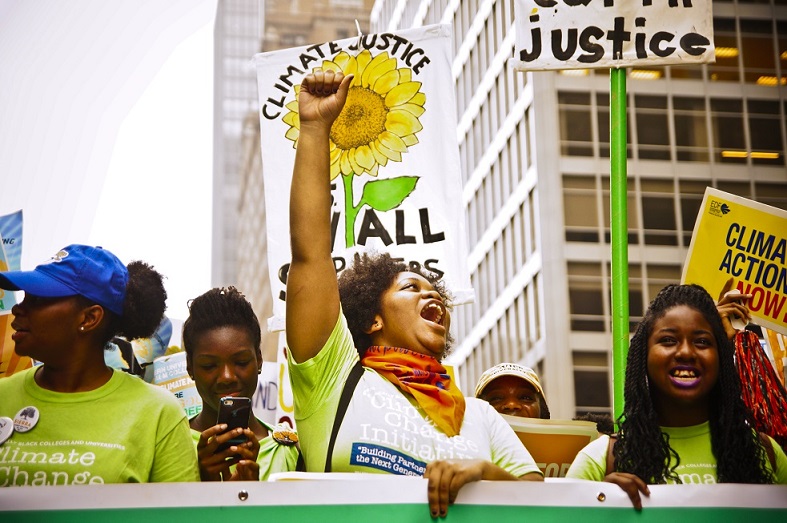
The aspirations of climate justice will not be achieved unless we realize that climate justice must include a gendered lens. Princess Daazhraii Johnson, a Gwich’in advocate of the Arctic National Wildlife Refuge and climate justice advocate, points out the links between climate justice and capitalist, patriarchal societies: “[M]en have abused their power to dominate and inflict violence upon not only women (and women of color in particular), but on our Mother Earth. And they absolutely are related.” The roots of colonization and patriarchy in the Americas included, and continue to include, stealing lands from Indigenous peoples, inflicting violence and domination over women, and further exploiting those lands for monetary gain. Isko’tsira:reh Amanda Lickers, a member of the Turtle Clan of Onondowa’ga Haudenosaunee, explains that women are attacked because, like the earth, they are the carriers of the next generation. “[Women are] where we get our identity as nations. So if you destroy the women, you destroy the nations, and then you get access to the land.”
“The atara sands industry treats women and gender non-conforming bodies in the same way as the earth: with violence and disregard. Pollutants that make the land infertile and the water undrinkable are also polluting the water that carries our children in the womb.” Sakigitowin Awasis, A Line in the Tar Sands
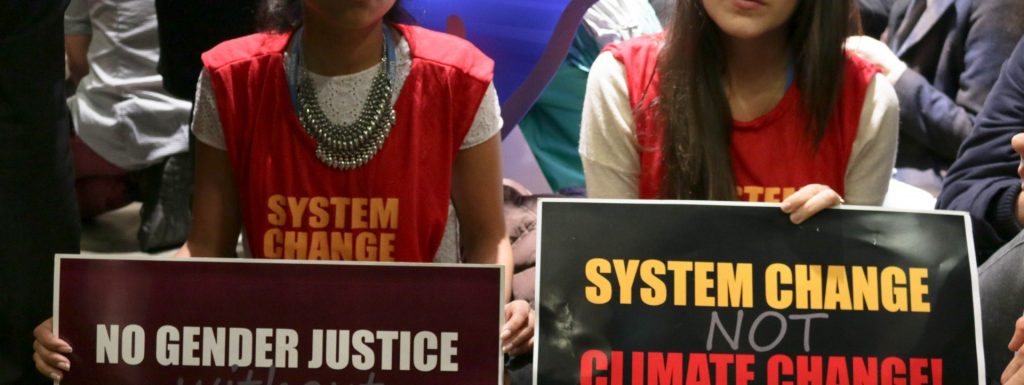
Embracing Climate Justice in the Feminist Vision
Climate change is a multiplier of injustice and it will continue its destruction most among women, gender non-conforming individuals and indigenous groups unless they are deliberately and consistently included in the practices and policies implemented to combat the environmental destruction. Ellinger-Locke notes feminist movements must include climate justice, and climate activists must have a gendered lens: “It is essential policy makers and movements alike embrace a feminist vision of climate justice. Feminist analysis of unequal power dynamics provides critical tools for structuring arguments in favor of community interdependence, and in opposition to white supremacist capitalist patriarchy. By placing women at the center of proposals for a global just transition away from fossil fuels, and reimagining how to reduce the harm caused by industrial processes, we can begin to build a safer world.” Women are shown to be more knowledgeable both about climate change and more concerned about its consequences. Companies with female board members are more likely to invest in renewable energy; women in the U.S. House of Representatives has consistently outvoted their male colleagues in favor of environmental protections every year for a decade.
Global feminist movements must demand a concurrent integration of climate justice within the larger feminist and human rights movements and vice versa. The current mechanisms utilized by countries and evidenced by agreements such as the Paris Climate Agreement showcases the global community’s refusal to understand how to truly address a just climate justice agenda. Anne Barre, from Women Engage for a Common Future and part of the Women Gender Constituency, states that grassroots and community-based efforts “are not supported by the current mechanisms, which focus on centralized and very large scale activities, often to the detriment of human rights, the rights of women and indigenous peoples, and ecosystem integrity.” Countries must recognize that individual solutions to climate change, like limiting single plastic use and investing in single-family home solar power, is often unattainable to the world’s poorest populations. In addition, it must be recognized that large corporations and extractive industries must be held responsible for the large impact that they have on the global climate condition. Any shift towards renewable, green energy transformations must be addressed through a gendered lens and recognize that women are often the ones in low-wage, factory jobs. Finally, any global climate justice efforts must understand the disproportionate impact that poorer countries face from climate change; efforts to install renewable energy sources threaten delicate, biodiverse and fertile ecosystems. Any change towards green energy must promote a just transition.
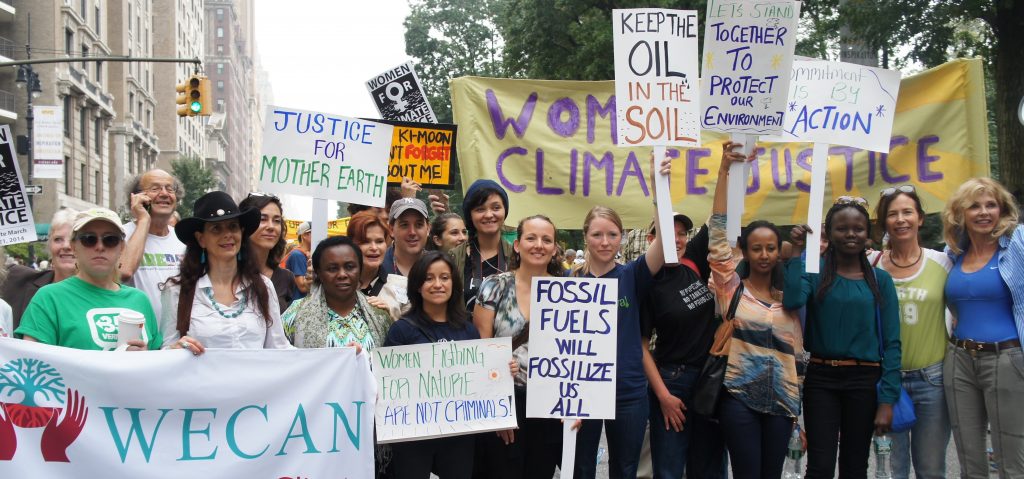
The science, the political realities and the understanding of women’s necessitous inclusion in climate justice is all there. We know that women are critical in social infrastructures and that climate change negatively impacts their ability to thrive. Scientists have showcased the immense amount of climate change and its exponentially increasing rapid impact on the vitality of the planet. Social scientists and politicians know that a gendered lens must be applied when seeking solutions. It is then a wonder as to why equal representation and consideration of women has not occurred. The globe cannot wait any longer. Women cannot wait any longer.




